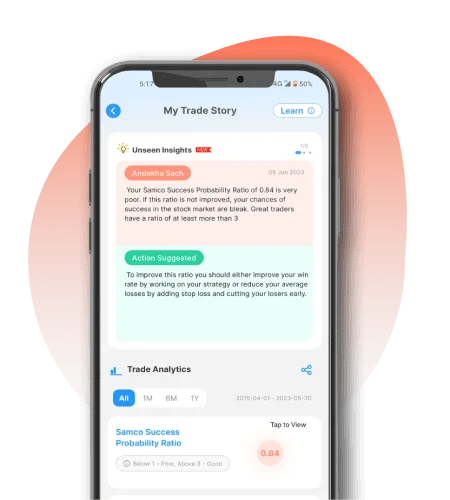Introduction
Commodity trading has evolved into one of the most dynamic and rewarding segments of the financial markets. Whether it's gold, crude oil, natural gas, or agricultural produce, commodities form the backbone of global trade and economic stability. Traders actively participate in this market to benefit from price movements, manage risk, and diversify their investment portfolios.
In India, commodity trading has gained prominence with the emergence of regulated platforms such as the Multi Commodity Exchange (MCX) and the National Commodity & Derivatives Exchange (NCDEX). These exchanges have made trading transparent, accessible, and safer for both retail and institutional participants.
However, trading in commodities is not just about placing buy and sell orders. Success requires an understanding of market behavior, risk management, and consistent learning. This article will guide you through key commodity trading tips, essential rules, and strategies that can help you build a disciplined and informed trading approach.
Introduction
Commodity trading refers to the buying and selling of raw materials or primary agricultural products. These commodities are usually traded in standardized contracts on organized exchanges. The main types of commodities include:
Metals: Gold, silver, copper, aluminium, Lead, Zinc
Energy: Crude oil, natural gas
Agriculture: Wheat, cotton, spices, soybean, etc.
In India, commodities are traded on platforms like MCX, which specializes in metals and energy, and NCDEX, which focuses on agricultural products. These exchanges operate under the regulatory supervision of the Securities and Exchange Board of India (SEBI), ensuring transparency and investor protection.
Commodity trading happens through two types of markets:
Spot Market: Involves immediate delivery and payment. Prices are determined by current demand and supply.
Derivatives Market: Involves trading in contracts (futures or options) where delivery is scheduled at a future date. This is where most active traders operate, using contracts to speculate or hedge against price changes.
Understanding this ecosystem is crucial before venturing into commodity trading.
Essential Tips for Commodity Trading
A) Diversify Your Portfolio
Just like in equity trading, putting all your funds into one commodity increases your risk. A diversified portfolio—across metals, energy, and agriculture—helps mitigate losses if one sector underperforms. For example, while energy prices may fall due to geopolitical stability, agricultural commodities might rise due to seasonal demand.
B) Stay Informed
Commodity prices are highly sensitive to global events. Economic indicators like interest rates, inflation, GDP data, and geopolitical tensions can move prices sharply. A sudden drop in U.S. crude inventories, for instance, can spike oil prices globally, affecting MCX futures in India. Keeping an eye on news, weather forecasts (for agri commodities), and economic reports is essential.
C) Start Small
If you're new to commodity trading, start with smaller positions. This approach helps you get familiar with price behavior, contract terms, and market timings without taking large risks. Many brokers offer mini contracts, which are ideal for beginners with limited capital.
D) Understand Leverage
Commodity futures often allow traders to take large positions with a small margin. While this increases potential returns, it also amplifies losses. For example, if a contract allows 10x leverage, a 2% move in price can result in a 20% gain or loss on your capital. Be cautious, and never risk more than you can afford to lose.
E) Embrace Continuous Learning
Markets evolve constantly. New regulations, technologies, and trading strategies emerge regularly. To stay ahead, read books, attend webinars, follow expert commentary, and backtest your strategies. Knowledge is your biggest edge in commodity futures trading.
Rules to Follow in Commodity Trading
A) Develop a Trading Plan
Before entering any trade, define your objectives. Are you trading to hedge a position or to speculate? Decide your entry and exit points, set a profit target, and determine how much you're willing to lose. A clear trading plan keeps emotions at bay.
B) Maintain Discipline and Patience
Impulsive trading often leads to losses. Stick to your plan and avoid revenge trading after a bad trade. Even the most successful trader’s face losses—what sets them apart is discipline and emotional control.
C) Apply Risk Management Techniques
Risk Management Techniques
Risk management is critical in a volatile market like commodities. Use stop-loss orders to cap your losses and define position sizes based on your capital. For example, never risk more than 2% of your capital on a single trade.
D) Keep Records of Your Trades
Maintain a trading journal. Record each trade with details like the reason for entry, outcome, and lessons learned. Over time, this helps identify patterns in your behavior and strategy flaws, leading to continuous improvement.
Incorporating Technical Analysis
Technical analysis is an important tool in commodity trading. It involves studying historical price patterns and using indicators to predict future movements. Here are some key indicators:
A) Moving Averages (MA)
Helps identify trends. A rising 50-day MA suggests a bullish trend, while a falling MA could indicate a downtrend.
B) Relative Strength Index (RSI)
Measures momentum. RSI above 70 may indicate an overbought condition, while below 30 signals oversold.
C) MACD (Moving Average Convergence Divergence)
Used to spot trend reversals and momentum shifts. A MACD crossover often signals a buy or sell opportunity.
D) Bollinger Bands
Shows volatility and potential breakout points. Prices moving outside the bands may signal strong trends or reversals.
Note: These indicators should be used in combination, and not as standalone recommendations. They are tools for analysis, not guaranteed predictors of price movement.
Practicing these tools with historical data and demo trading helps develop confidence in applying technical strategies in live markets.
Common Mistakes to Avoid
Commodity trading offers great potential, but many beginners fall into avoidable traps. Here are some common mistakes:
A) Overtrading
Trading too frequently without a valid reason can erode your capital through transaction costs and impulsive decisions.
B) Ignoring Fundamentals
Focusing solely on charts while ignoring supply-demand dynamics or geopolitical developments can lead to poor trades.
C) Not Adapting to Market Conditions
Sticking rigidly to one strategy without adjusting to changing volatility or market sentiment often leads to failure.
D) Skipping Strategy and Planning
Trading without a clear roadmap is like sailing without a compass. Avoid emotional decisions and always trade with a plan.
Avoiding these pitfalls is half the battle won in commodity trading.
Conclusion
Mastering commodity trading involves a combination of knowledge, discipline, and consistent learning. Understanding how commodity exchanges like MCX and NCDEX work, applying technical analysis, following trading rules, and staying informed about global developments are key to success.
By diversifying your trades, managing your risks, and learning from every trade, you can gradually build a robust trading system that works for you.
If you're ready to start your journey or take your trading to the next level, explore Samco’s trading platforms and tools. From live market feeds to expert research, we offer everything you need to become a more informed and confident commodity trader.








 Easy & quick
Easy & quick